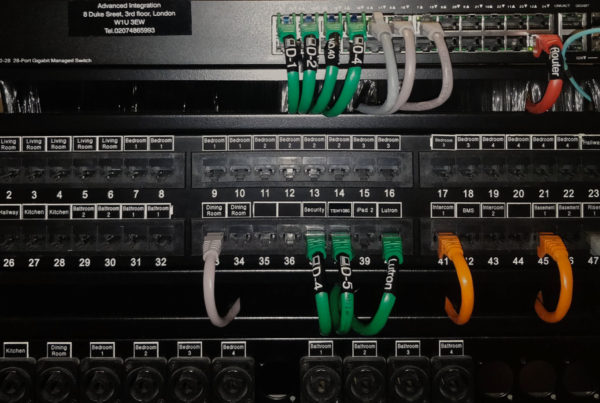There are many home automation systems on the market, each with its own pro and cons. One might have a stylish interface, another might have limited functions, and so on.
Regardless of aesthetic principles and flexibility, the most basic requirement of a home automation system is that it has to work. As simple as that. Yet, issues happen all the time.
Indeed, a discrete amount of our projects started with the clients asking us to ‘fix’ their systems. Sometimes, the brand is deemed at fault, even when that brand is actually one of the best on the market. Other times, they decide their experience was so awful that they don’t want automation in any future project.
If on one side it is understandable that frustration could lead to this drastic decision, on the other it’s important to stress that a bad automation experience doesn’t mean automation is bad. Not to mention, when it happens to e.g. architects, designers or engineers, and they in turn advice clients against the technology, it harms the entire industry. Many integrators witness cases of big projects where automation could really add value to the property and comfort for the client, yet the owner was advised against it by a biased consultant and refuses to even consider it.
Well begun is half done
When everything works properly, life with home automation is enjoyable and hassle-free.
While some contingent malfunctioning might be part of the equation (and that’s why maintenance exists), other issues are not meant to take place and due to sheer lack of expertise. These may often go undetected by the layman but are loud and clear to professionals. Unfortunately, this means that they are only discovered at a later stage, when troubles (and stress) already occurred.
That’s why it is important to hire automation integrators – and knowledgeable ones – as technology consultants from the beginning. For instance, there may be projects where bad cabling prevents a successful installation, or where pieces of equipment with proven compatibility issues are being considered or installed. Good integrators can prevent or fix all these complications and advise on suitable technology to best meet the client’s requirements.
Even when everything seems to be working, there may be times when an issue arises. If the client is left alone with no clues, frustration and discomfort naturally follow. It’s therefore essential for the integrator to not only provide clear labelling and instructions, but also be available for prompt maintenance, either remotely or on-site when needed.
Expectations vs reality
Sometimes, more than a problem with the system itself, there’s a problem with user experience. Not all people have the same familiarity with technology and a good home automation system should take that into account. Moreover, even knowledgeable users get inevitably frustrated with over complicated interfaces. After all, there’s no point in having home automation if even a simple action like turning off the lights in a room is hidden behind multiple screens and touches. The ultimate goal is to make life easier, not to complicate it.
There’s no single winning approach here. Having thorough conversations with the clients to understand their lifestyle, taking the time to identify all the people that will use the system, is a good starting point to select the most fitting infrastructure. Especially when dealing with projects that involve bespoke solutions (as it is often the case with luxury residences), investing in research and development is also crucial, and a good indicator for the end user of how experienced and committed a company is.
At Advanced Integration, besides hours and hours spent testing equipment, we are constantly working on improving our interface. The colour or position of an icon might seem a trivial matter, but can actually make the difference in how intuitive a setting is perceived. We take feedback seriously and, despite having completed many successful projects, are always looking for ways to raise the bar and deliver even better solutions.
Get to know our process and contact us to discuss your project!







